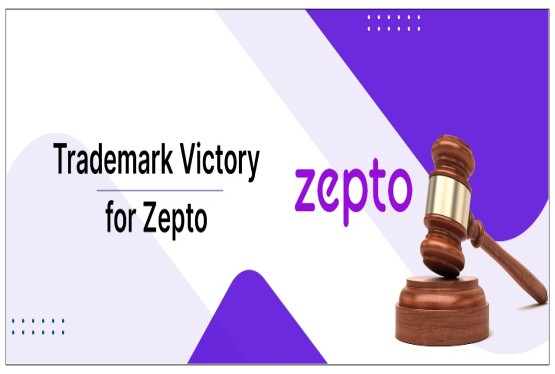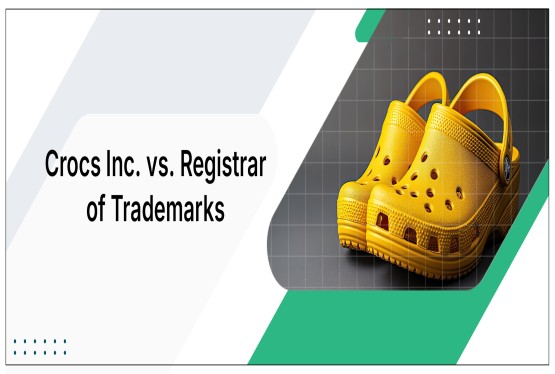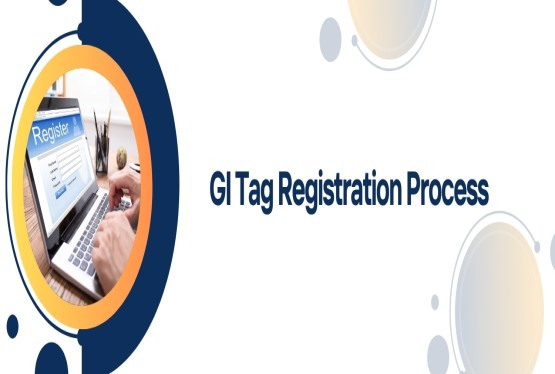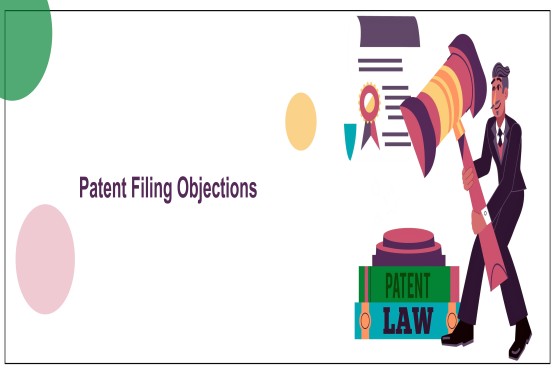“Distinctive” and “Distinguish” are the two important terms which you would have heard most of the time in Trademark Objection while processing through Trademark Registration. In simple words, any prudent person can define these two terms but when we talk as per the Trademark law, the term ‘Distinctive’ and ‘Distinguish’ are referred to as two main important characteristics. Here, the main question arises for an applicant, have you ever wondered why, after filing a Trademark Application, you receive an objection via Examination Report under Section 9(1)(a) on the absolute grounds for refusal of the Trademarks Act, 1999, which states as:
“The above mentioned application has been examined under the provisions of Trade Mark Act,1999 and Trade Mark Rules,2017 and the trademark applied for is open to objection under the following sections :
The objection is raised under S 9(1) (a) of the Trade Marks Act 1999, as the mark is non-distinctive and as such it is not capable of distinguishing the goods or services of one person from those of others. Hence, the above application is liable to be refused”.
The statutory provision mentioned above is one of the absolute grounds for the objection raised under the Trademark Application. An applicant receives objection on the two absolute grounds, ie; under section 9(1)(a) and section 9(1)(b). In this article, we will understand the grounds of objection under section 9(1)(a).
As per the Trademark Act, Section 9(1)(a) forbids the registration of marks that lack any distinctive character. To be truly distinctive of a person's goods, a word or words must be generally incapable of being applied to the goods of anyone else.
There are two kinds of Distinctiveness: Inherent and Acquired
To be distinctive or capable of distinguishing the goods, the mark itself may have some inherent qualities or distinguishing characteristics that make it distinctive or capable of distinguishing one person's goods from those of others.
At this juncture, you're probably wondering why the Trademark Department has raised an objection on the Absolute grounds for refusal of registration under Section 9(1)(a) for the want of Distinctive and Distinguish nature for your wordmark or device with respect to your trademark application via Examination Report. Then your answer to this question cannot be clear with a single definition of these two terms without understanding its judicial prudence.
If you are not sure about what “Distinctive” or “Distinguish” nature has to be there to make your trademark application capable of being registered as Trademark, read out this article to help you comprehend these technical trademark terms to stand out from your competitors.
Let us Comperhend “What are the Distinctive and Distinguish Character Under Section 9(1)(a) in Trademark Means”:-
A successful trademark is an important asset which can enhance a brand's reputation and influence consumer preferences. We have been using trademarks when we establish a new, distinct meaning for an existing word. Furthermore, we can use it when coining a new term to avoid customer confusion on the market and to distinguish the origin of products and services. Let us now examine the difference between trademark distinctiveness and distinguishness characteristics.
What comes in your mind when you first hear the words “Distinctive” and “Distinguish” from the point of layman's and industry’s parlance.
In Prudent parlance, Distinctive means a characteristic of one person indicating a special quality or identity or thing that serves to distinguish it from others whereas, distinguish in simple words means when one thing has a feature or quality that distinguishes it from another, the two things are considered distinguishable because only the first thing has the feature or quality.
In the Legal parlance, distinctiveness and distinguishability are important concepts in trademark law. A trademark may be registrable if it performs the essential trademark function and has a distinctive and distinguishing character. Distinctiveness marks are those that do not provide any information about the nature, quality, or characteristics of the goods to which they are applied. On the other hand, Distinguishness is the ability to stand out from the crowd. If a mark is not distinctive, it can cause confusion in the minds of product consumers about the origin of the products or services it represents.
The primary function of any trademark is to ensure to the consumer the identity of the origin of the marked goods or services. A trademark must be able to distinguish itself from other marks or signs in order to fulfill that function. Distinctiveness influences everything from a mark's registrability to its scope of protection, enforceability, and continuing validity once registered. It must be "distinctive" and “distinguished” but how can a brand owner meet the criteria?
Let’s understand this from analyzing both the characteristics as per the Trademark Act, 1999.
Analyzing the Characteristics of Trademarks:
To be a valid trademark, a mark must be inherently distinctive or have acquired distinctiveness through use, according to trademark law. The primary meaning of non-inherently distinctive marks is that they are not valid trademarks. These marks, which are not valid in their primary meaning, would acquire secondary meaning upon acquiring distinctiveness. According to the secondary meaning, trademarks that have acquired distinctiveness are valid. Personal names, surnames, and geographical terms are generally not considered distinctive, but they may be registered as valid trademarks if they acquire distinctiveness or secondary meaning.
Even if the same owner uses two different marks on the same type of goods, the marks are said to be distinctive and valid if they indicate different qualities, such as the best and second best quality of the goods produced by the same owner. In that sense, the marks should be able to distinguish between different quality goods owned by the same person. As a result, distinctive character is an essential feature of a valid trademark, whether acquired naturally or through regular use.
Legal Regime as per the Trademark Registry and highly praised Benchmark Judgements:
There are several interpretations made through in the highly praised judgements during the time which does not only clarified the understanding of “Distinctiveness” and “Distinguishness” character but it also stated how both the characters can be differentiated in the Trademark.
- To be considered distinctive in the true sense, a mark should not be capable of indicating the goods or services of another person. The mark must be distinguishable or capable of distinguishing one person's goods and services from those of another. For example, the confectionary mark 'cookies' can refer to any person selling cookies, so the mark lacks distinctiveness. A mark's distinctiveness can be inherent or acquired. When a mark is distinctive on its own, such as 'McDonald's,' 'Coca Cola,' or 'Nike,' it does not require any evidence to prove its distinctiveness. The act also recognises acquired distinctiveness, which occurs when usage, advertising expense, goodwill, and other factors establish that the mark is distinctively associated with its owner, such as the phrase 'Magic Masala' in relation to Maggi, which was found to have acquired distinctiveness and goodwill by the Madras High Court.
- The mark is not distinctive or distinguished at first glance, and it cannot be registered unless evidence of distinctiveness is provided. Such evidence, however, cannot exist if the mark was only used for a short time. As a result, the mark cannot be registered.
- The recent decision by the Intellectual Property Appellate Board (IPAB), Mumbai, in the case of Hindustan Unilever Limited V. The Registrar of Trademarks, explains the principle behind section 9 (1) (a) of the Act in a better way. Under classes 3 and 5, a trademark application was filed for the registration of the marks "GLOW & LOVELY" and "GLOW & HANDSOME" (Registered TM Application No. 3938924 & 3938925). Following that, the Trademark Registry objected to the subject marks in an examination report based on Sections 9(1) (a). Furthermore, the TM Registry was dissatisfied with the Applicant's response, so a hearing was held in which documentary evidence was presented, but it was not properly considered. The TM Registry refused registration for both marks and failed to provide detailed reasons for refusal other than a lack of distinctive character under Section 9(1) (a). Even after requesting detailed grounds for refusal via form TM-M, the TM registry failed to provide the grounds, prompting an appeal to the tribunal. The IPAB determined that the registry erred in issuing the order and failed to consider the facts, law, or documents submitted by the Applicant. Furthermore, the combination of the two common words has no dictionary meaning or significance other than referring to the appellant and its goods, and the registry did not consider the Appellant's previously registered marks. As a result, because the marks were deemed distinctive, they were ordered to be advertised in an early issue of trademarks journal.
- Distinctiveness is the ability to distinguish your products and services from those that provide similar goods and services. As a result, we are unable to register the signs that identify the distinguishable product or services. For example, let's consider the trademark 'diet ice cream.' The company sells ice cream, cold drinks, shakes, and other similar items. To begin, the term 'ice cream' refers to the product itself, while 'diet' refers to the fact that it contains fewer calories. As a result, we are unable to register it under the Trademark Act.
- A trademark shall not be registered unless the trademark is distinctive in relation to the goods for which it is proposed to be registered, or is not distinctive but capable of distinguishing goods with which the proprietor of a trade mark is or may be connected in the course of trade from goods.
- The mere demonstration or admission that a mark distinguishes does not compel the registrar to consider that mark distinctive in nature. It must be further modified to distinguish, which brings within his judgement for the broader field of strangers' and the public's interests.
- It is also worth noting that a non - verbal device mark (logo trademark) is frequently objected to under section 9(1)(a) during the trademark registration examination stage. This action does not appear to be fair because a logo without words cannot be lacking in distinctiveness unless it is a representation of the goods or services to which it is applied.
How to demonstrate ‘Distinctive’ and ‘Distinguish’ Characteristics if you have received Trademark Objection?
The extent to which the actual user has, in fact, rendered the mark distinctive of the applicant's goods up to the date of the application is to be considered in order to determine whether the mark has been adapted to distinguishing those goods. When determining whether a mark is capable of distinctiveness, the probability or improbability of maintaining distinctiveness in the future must be considered.
a) In the case of Imperial Tobacco Co. of India Ltd. v. The Registrar of Trademarks [AIR 1977 Cal. 413]., the Tabaco company with the label "Simla" was refused for registration because the word entailed a well-known geographical location, which cannot be registered as a trademark.
b) In the case of T.H. [(1917) 34 RPC 169], The Court determined that, while the B.T.H. the mark was not distinctive for the reasons stated by the Registrar, it should be presumed distinctive because it had been in use for many years.
c) In the case of Griffiths Hughes Ltd. v. Vick Chemical Co. [1959 Cal 654], the Court ruled that "VapoRub" was not an invented or coined word, but it was allowed to be registered if evidence of acquired distinctiveness was presented. It was determined that the Vicks Chemical Company's mark "VapoRub" had been in continuous use in India long before the date of application for registration, and thus had acquired sufficient distinctiveness to be registered as a Trademark.
d) In the case of United Iron and Steel Works vs. Government of India, AIR 1967 P H 64, the registrar allowed the appeal and reversed the order of the Assistant Registrar after citing the relevant principles to the facts of the case and with the assistance of relevant case laws and findings. As a result, the appellant's application was granted, and the mark "UIS" was registered in the relevant Part of the register.
In determining whether a trademark is inherently distinctive, one must consider the mark in isolation from any special surrounding circumstances and without regard to any extrinsic evidence of any such circumstances, and whether, when viewed in that light, the mark could be said to be capable of distinguishing the applicants' goods from similar goods of other traders.
The length of use, volume of goods marketed, extent of service provided, use of an advertising slogan, use in combination with other marks, advertising expenditure, evidence of trade and consumer surveys are all factors considered in determining whether a particular mark has acquired distinctiveness. Registering a genuine, legal, and valid trademark can help to establish an industrial enterprise in a country like ours, where industry is rapidly going to develop. When it is proven that a trade mark made available for registration is eligible for registration, that there are no challenges to its registration, that its registration is unlikely to jeopardize the public interest, it must normally be added to the trademark department.
Final Thoughts
The discussion highlights the importance of trademark distinctiveness and distinguishness as per trademark law where a mark that lacks distinctiveness cannot be called a valid trademark. It is not necessary for these marks to be inherently distinctive, but marks that do not appear to be inherently distinctive can acquire distinctiveness through consumers' identification of that mark in association with goods or services from a specific source. If you have received Trademark Objection for Distinctive and Distinguish Characteristics of your brand, you are supposed to file a REPLY TO EXAMINATION REPORT within 30 days of issuance of the Trademark Examination Report. Need help, feel free to visit us here.





























_(b)_of_the_Trademark_Act,_1999_(1)_crop10_thumb.jpg)



_crop10_thumb.jpg)




























_crop10_thumb.jpg)
_crop10_thumb.jpg)






_crop10_thumb.jpg)








_crop10_thumb.jpg)



_crop10_thumb.jpg)





























_crop10_thumb.jpg)

















_crop10_thumb.jpg)






_crop10_thumb.jpg)












































































































































_crop10_thumb.jpg)




































_crop10_thumb.jpg)












_crop10_thumb.jpg)















































_crop10_thumb.jpg)
























































































